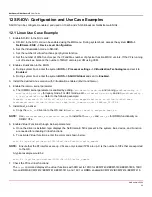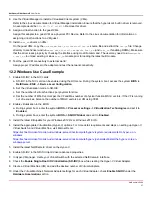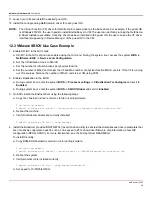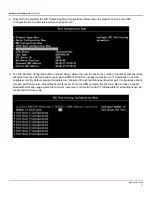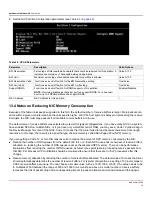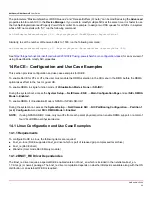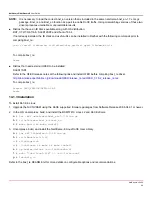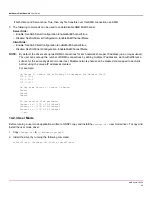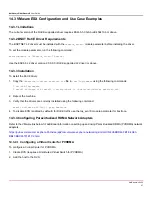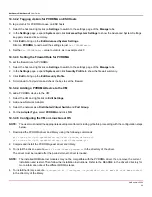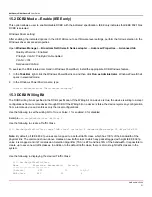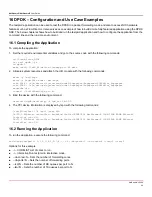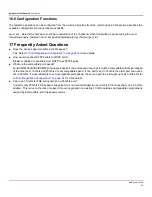
NetXtreme-UG100
50
NetXtreme-C/NetXtreme-E
User Guide
15 DCBX – Data Center Bridging
Broadcom NetXtreme-E controllers support IEEE 802.1Qaz DCBX as well as the older CEE DCBX specification. DCB
configuration is obtained by exchanging the locally configured settings with the link peer. Since the two ends of a link may
be configured differently, DCBX uses a concept of 'willing' to indicate which end of the link is ready to accept parameters
from the other end. This is indicated in the DCBX protocol using a single bit in the ETS Configuration and PFC TLV, this bit
is not used with ETS Recommendation and Application Priority TLV. By Default, the NetXtreme-E NIC is in 'willing' mode
while the link partner network switch is in 'non-willing' mode. This ensures the same DCBX setting on the Switch propagates
to the entire network.
Users can manually set NetXtreme-E NIC to non-willing mode and perform various PFC, Strict Priority, ETS, and APP
configurations from the host side. Refer to the driver readme.txt for more details on available configurations. This section
provides an example of how such a setting can be done in Windows with Windows PowerShell. Additional information on
DCBX, QoS, and associated use cases are described in more details in a separate white paper, beyond the scope of this
user manual.
The following settings in the UEFI HII menu are required to enable DCBX support:
System Setup
→
Device Settings
→
NetXtreme-E NIC
→
Device Level Configuration
15.1 QoS Profile – Default QoS Queue Profile
Quality of Server (QoS) resources configuration is necessary to support various PFC and ETS requirements where finer
tunning beyond bandwidth allocation is needed. The NetXtreme-E allows the administrator to select between devoting NIC
hardware resources to support Jumbo Frames and/or combinations of lossy and lossless Class of Service queues (CoS
queues). Many combinations of configuration are possible and therefore can be complicated to compute. This option allows
a user to select from a list of precomputed QoS Queue Profiles. These precomputed profiles are design to optimize support
for PFC and ETS requirements in typical customer deployments.
The following is a summary description for each QoS Profile.
Table 25: QoS Profiles
Profile No.
Jumbo Frame
Support
No. of Lossy CoS
Queues/Port
No. of Lossless CoS
Queues/Port
Support for 2-Port SKU
Profile #1
Yes
0
1 (PFC Supported)
Yes (25 Gb/s)
Profile #2
Yes
4
2 (PFC Supported)
No
Profile #3
No.
(MTU <= 2 KB)
6
2 (PFC Supported)
Yes (25 Gb/s)
Profile #4
Yes
1
2 (PFC Supported)
Yes (25 Gb/s)
Profile #5
Yes
1
0 (No PFC Support)
Yes (25 Gb/s)
Profile #6
Yes
8
0 (No PFC Support)
Yes (25 Gb/s)
Profile #7
This configuration maximizes packet-buffer allocations to two lossless CoS Queues to maximize RoCE
performance while trading off flexibility.
Yes
0
2
Yes (25 Gb/s)
Default
Yes
Same as Profile #4
Yes
Содержание NetXtreme-E
Страница 1: ...NetXtreme UG100 August 23 2018 NetXtreme C NetXtreme E User Guide...
Страница 58: ......

